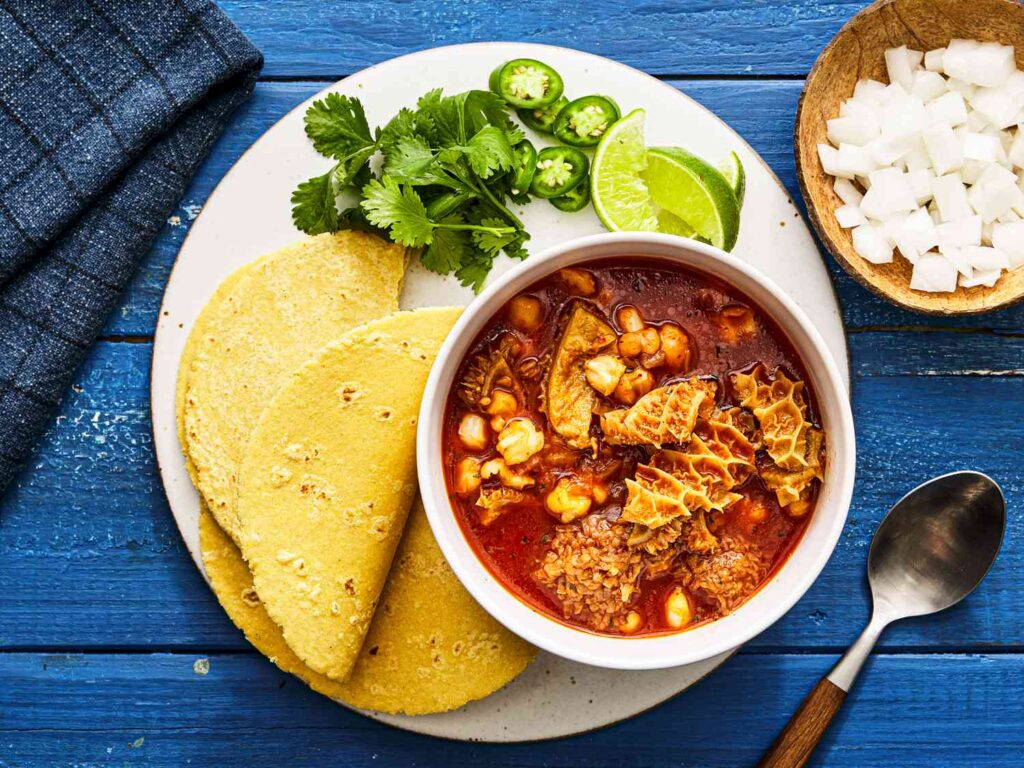Menudo a savory and aromatic Mexican soup, is more than just a dish; it’s a cultural institution deeply rooted in the heart and soul of Mexico. This traditional dish, known for its rich flavors and comforting warmth, has been cherished for generations and holds a special place in the culinary tapestry of the country. In this article, we will delve into the origins, preparation, and cultural significance of menudo, exploring why this humble soup has become a symbol of Mexican culinary excellence.
Historical Roots
The history of menudo can be traced back centuries to the indigenous communities of Mexico. Its roots lie in the pre-Hispanic era, where it was initially prepared using local ingredients such as hominy and a variety of meats, including tripe. With the arrival of the Spanish colonizers, new ingredients such as spices and seasonings were introduced, transforming menudo into the dish we know today.
Ingredients and Preparation
At its core, menudo is a hearty soup made from tripe, which is the lining of the cow’s stomach. The tripe is thoroughly cleaned and simmered for hours until it reaches a tender and flavorful consistency. While tripe is the star of the show, menudo is a symphony of various ingredients that contribute to its unique taste.
The soup is typically flavored with a robust broth made from a combination of chili peppers, garlic, onions, and a blend of aromatic spices. Hominy, large corn kernels that have been treated with an alkali, is often added to the mix, providing a satisfying chewiness and rounding out the dish’s texture.
Menudo is traditionally seasoned with a blend of spices, including oregano, cumin, and bay leaves. This combination not only imparts a distinctive flavor but also elevates the dish to a level of culinary excellence that has made it a beloved comfort food for many.
Regional Variations
One of the fascinating aspects of menudo is its regional variations. Different states and regions of Mexico have their own unique take on this classic dish, adding a diverse array of ingredients and flavors. For example, in the northern states, menudo is often prepared with a red chili pepper base, giving it a fiery and bold taste. In contrast, central and southern regions may use a white broth, showcasing a milder and creamier flavor profile.
In some areas, additional ingredients such as chickpeas, pig’s feet, and pig’s ears may find their way into the pot, creating a version of menudo that reflects the local culinary preferences and available resources. This regional diversity is a testament to the adaptability of menudo, allowing it to evolve and thrive in various corners of Mexico.
Cultural Significance
Menudo is not just a dish; it’s a cultural experience that brings people together. Traditionally, it is served on weekends or special occasions, often enjoyed with family and friends. Many Mexicans believe in the healing properties of menudo, considering it the perfect remedy for a hangover or a comforting meal during the colder months.
Beyond its culinary appeal, menudo is deeply embedded in Mexican celebrations and traditions. It is a staple at festive events such as weddings, birthdays, and religious ceremonies, symbolizing the warmth and communal spirit of Mexican culture. The act of preparing and sharing menudo has become a time-honored tradition, fostering a sense of unity and connection among those who gather around the table.
Menudo in Popular Culture
The cultural significance of menudo extends beyond the dining table and into the realm of popular culture. In the world of music, “Menudo” is the name of a famous Puerto Rican boy band that gained international fame in the 1980s. While the musical group may not have a direct connection to the soup, the name itself serves as a reminder of the dish’s prominence in Latin American culture.
In literature and film, menud’o is often portrayed as a symbol of home and tradition. Stories set in Mexican communities frequently depict characters coming together over a steaming bowl of menudo, highlighting its role as a unifying force within families and communities.
Conclusion
Menudo is more than a dish; it’s a celebration of tradition, community, and the rich culinary heritage of Mexico. Its origins in indigenous communities, adaptations through centuries of cultural exchange, and its role in family gatherings make menudo a true icon of Mexican cuisine.
Whether enjoyed in a bustling market in Mexico City, a family kitchen in Guadalajara, or a restaurant in the United States, menudo transcends borders and brings people together through its savory and soul-nourishing goodness. As we savor each spoonful of this hearty soup, we not only indulge in a delicious meal but also partake in a cultural experience that has stood the test of time, weaving its way into the very fabric of Mexican identity.







